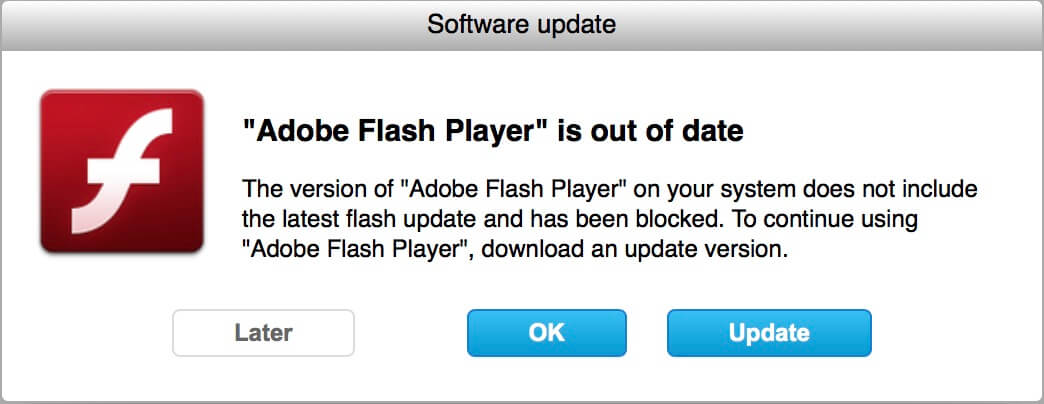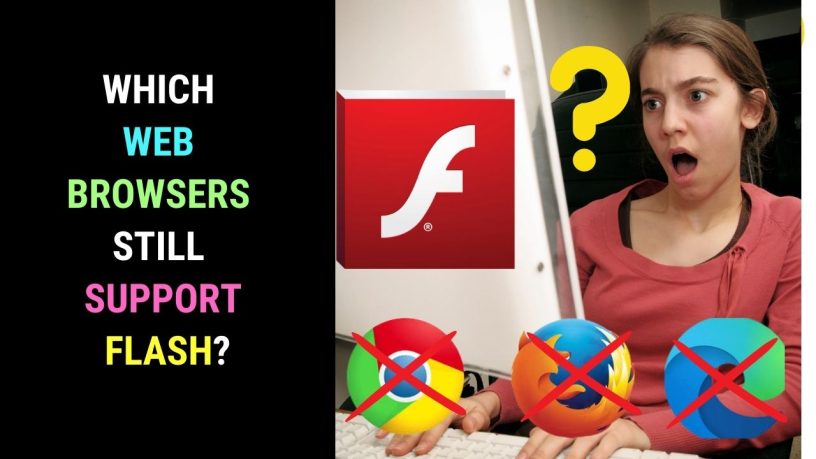Last updated on January 23rd, 2024 at 02:18 am
Some years back, the Flash video format was well-known when it came to playing web videos.
Platforms such as YouTube, Google Video, and even Flickr used this video container format to deliver their videos to users.
The videos are played via a browser that comes with a Flash player plug-in. Without this plug-in, you can’t play any streaming videos on these sites. The same applied if the Flash plug-in isn’t updated.
While Flash was useful, its days were numbered. Adobe announced as early as 2017 that it would discontinue Flash by the end of 2020.
That meant that the major browsers, too, ended support for Flash. But why the move?
Security Concerns
Adobe was constantly updating its Flash player and this was irksome to users.
That was just a minor issue with the Flash plug-in. A bigger concern was security. It was an open target for virus and malware attacks.
When users unknowingly visited rogue video streaming sites they were prompted to update or install the latest flash version.

If they believed the pop-up message was from Adobe and updated their flash player or installed the recommended version, they often fall prey to virus or malware attacks.
Lack of Efficiency
Flash is resource-intensive. It taxes your system resources. It isn’t mobile-friendly either. Battery consumption is high when mobile devices use Flash.
It was, for this reason, that iPhone distanced itself from Flash when launched in 2007. Steve Jobs labeled Flash as a has-been technology once relevant for desktop computers but doesn’t cut it with mobile technology.
To add insult to injury even Android doesn’t support Flash.
Web Life After Flash
Adobe’s intention to discontinue the Flash player was announced as early as July 2017 to help web browser providers and site authors prepare for the discontinuation of the service.

After this date, as early as January 2021, major web browsers stopped supporting Flash content.


Although the major players in the online video world have moved away from Flash video, there are still some sides that are still stuck with Flash video.
If you visited these sites, you’ll get the following message.

You’ll not get the option to install the Adobe Flash player.
So, how do you play Flash content on websites that haven’t switched from Flash after December 31, 2020? Which web browsers still support Flash?
You may spend hours looking for a web browser that supports Flash. Truth be told, you’ll be just on a wild goose chase. No browser would touch Flash with a barge pole.
Flash Supported at Archive.Org
Probably the only site that supports Flash is archive.org. It has a repository of flash animation clips.

You can play back these flash animations. However, not through the Flash browser plug-in.
The archive uses a Flash emulator called Ruffle, built in the Rust programming language. When you click on a Flash animation, the emulator is launched.

Flash content starts playing after the emulator is launched.

Ruffle Available as a Browser Extension
The good news is that Ruffle is available as a browser extension for Chrome and Firefox.

It works with Windows, Mac, and Linux.
Whenever Ruffle detects Flash content on a web page, it substitutes the embedded flash movie with the Ruffle player. The Flash movie will play in-page.
So, is it safe to use Ruffle? The official website claims the extension “avoids all the security pitfalls that Flash had a reputation for. “
Installing and Testing Ruffle
Let’s use the Ruffle chrome extension to test whether it can identify Flash content on a web page.
Let’s first do a Flash player test.

When we enter the flash page, we see the following message.
Let’s see if this changes after installing the Ruffle extension.


Clicking on the Ruffle icon will open the settings page with a message saying that the extension is running.

After refreshing the Flash player test page, you will see a play button.

Entering the flash page, you’ll now see Flash content displayed instead of the Flash player is no longer supported message.

The first thing we want to do is install the Ruffle extension through the Chrome web store.
This shows that the extension is working and you’ll be able to display Flash content on most web pages.
Play Standalone SWF Files
If you have a standalone SWF file (not embedded on a web page) but rather a single file, you may also play them back through the Ruffle site. This is if your current media player doesn’t play it.
On the Ruffle site, click on the Demo tab.

You may then either load a file from your hard disk or drag and drop it in the provided space.

Your file will play but there will be no player controls visible.

To see a limited number of player controls right-click on the video.
You may also play your SWF Flash movie files online through the Cloud Flash Player.
So, instead of worrying about which browsers still support Flash, you could use a browser extension like Ruffle to play Flash content.



